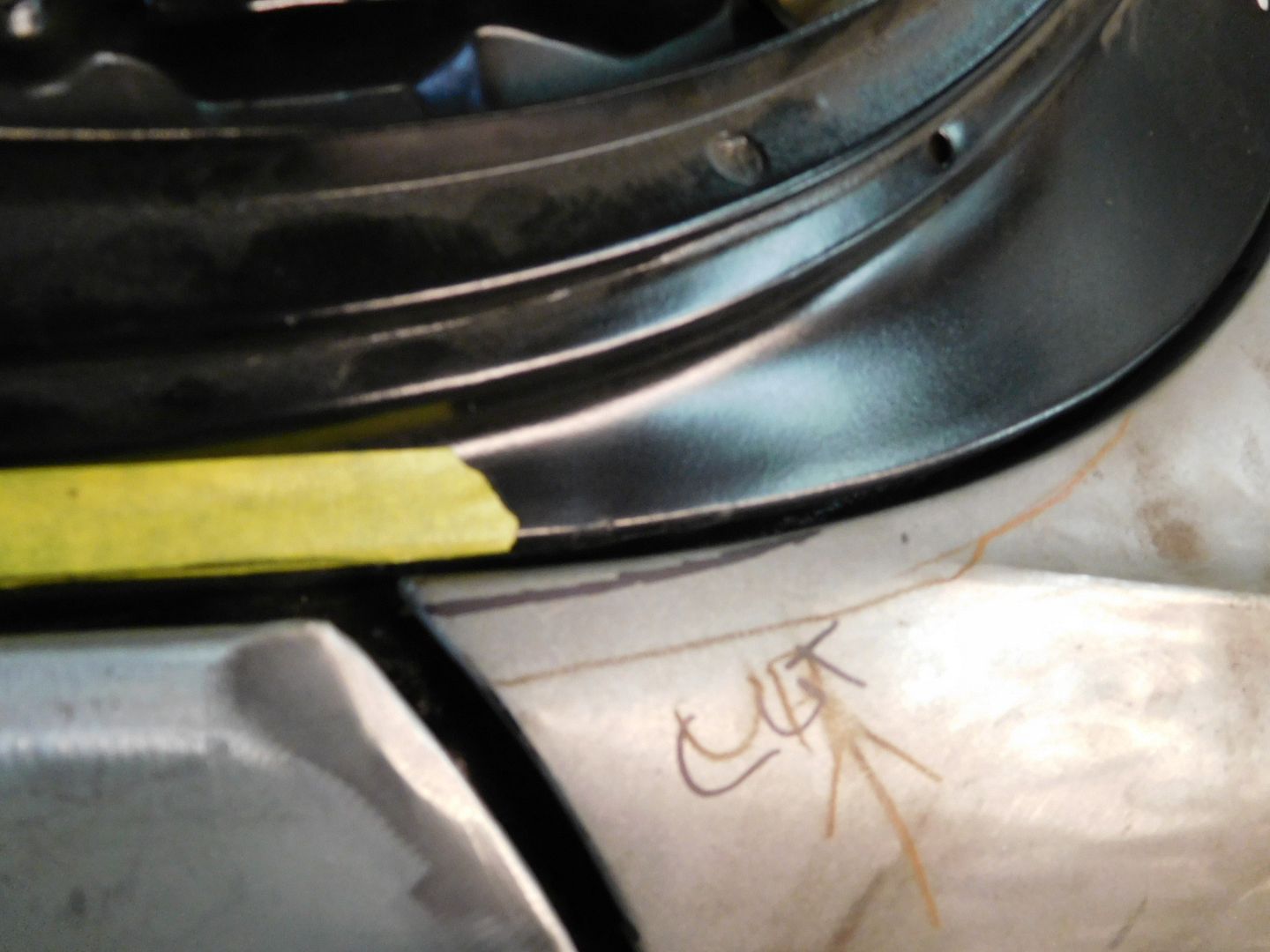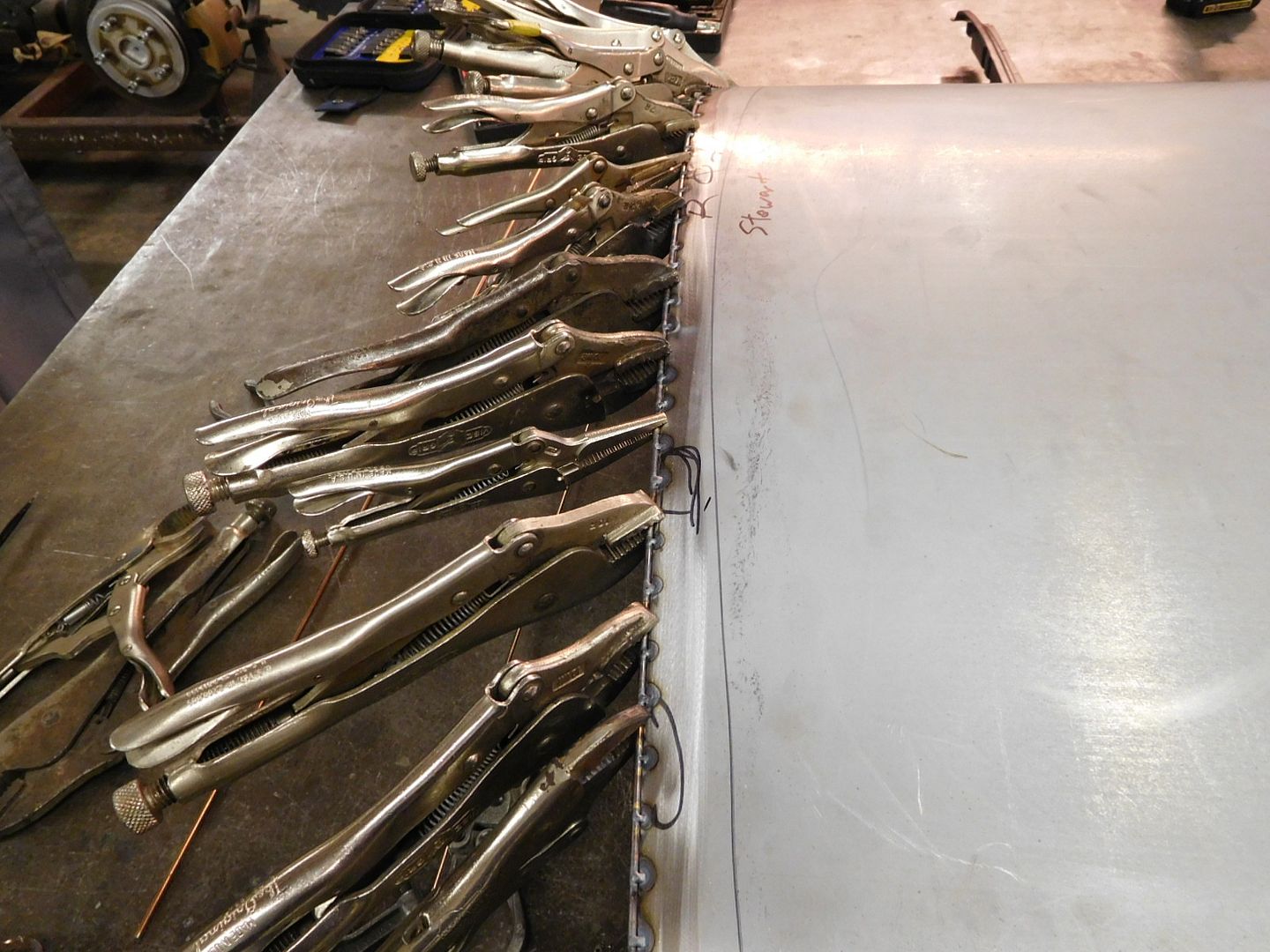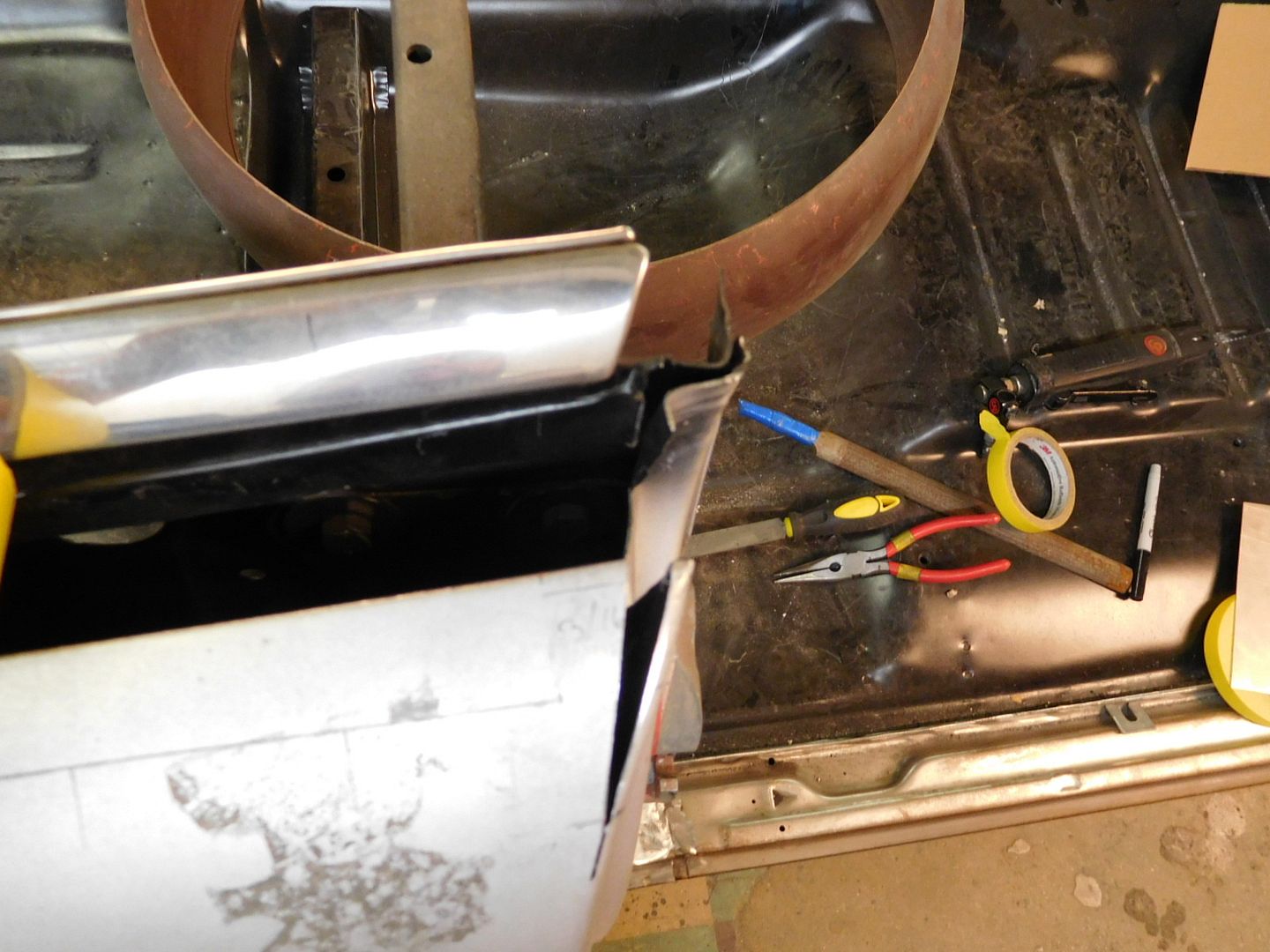O
Outlaw
Chad, in some of your patches it looks like you spotted the whole patch in with spot welds, then removed the clamps and hammered the welds. Does this mean you planished the welds cold?
The only time I do spot welds is when I first set it up to hold itself in place, then typically I run the whole panel in one pass without stopping, then yes after it cools I will typically grind it a little bit and then planish it. When it's hot it could still be moving and shrinking so I let it do it's thing and then once it's cooled I get back to work.Outlaw said:Chad, in some of your patches it looks like you spotted the whole patch in with spot welds, then removed the clamps and hammered the welds. Does this mean you planished the welds cold?
Learning to tig weld in a comfortable sitting position to master the art of it is the first step. Once you the act of tig welding that way , you can move on to less comfortable positions.You can also do things to make yourself more comfortable not sitting , such as leaning on a vehicle in a way that you can work the rod holding hand, torch holding hand, & foot without undue tiring yourself out.Outlaw said:I was thinking more in regards to when you are in a position that you can only push the pedal and not pulse it or vary it. I know they make an adjustment that works on the gun too, but I cant chew gum and walk so making the puddle and feeding it is a big enough challenge. I think I could Tig weld when Im comfortable sitting on a stool in front of my welding table. Working on patch panels without a rotisserie....not so sure.
Learning to tig weld in a comfortable sitting position to master the art of it is the first step. Once you master the act of tig welding that way , you can move on to less comfortable positions.You can also do things to make yourself more comfortable not sitting , such as leaning on a vehicle in a way that you can work the rod holding hand, torch holding hand, & foot without undue tiring yourself out.Outlaw said:I was thinking more in regards to when you are in a position that you can only push the pedal and not pulse it or vary it. I know they make an adjustment that works on the gun too, but I cant chew gum and walk so making the puddle and feeding it is a big enough challenge. I think I could Tig weld when Im comfortable sitting on a stool in front of my welding table. Working on patch panels without a rotisserie....not so sure.
Outlaw;n79226 said:I wear glasses and Im 67. Whats my chances of ever mastering Tig welding? I'm still pretty steady and don't have any shaking issues, but....
One of the guys I the shop uses one of them and it helps him tremendously, I try them and they make me feel drunk. lol.Arrowhead said:Outlaw;n79226 said:I wear glasses and Im 67. Whats my chances of ever mastering Tig welding? I'm still pretty steady and don't have any shaking issues, but....
I picked up some cheater lenses for my helmet and it helped tremendously. They are just plastic magnifying lenses that slide in your helmet. You can get different magnifications. Really helped me see better.
IMO 1/8" is way to big for a mig welder, the occasional oops happens but really try to thin that down. I always cut the patch piece to size and I leave the piece that it is going to a little long. over lap them and draw a line with a fine tip sharpie.. and I don't mean the standard one, I use the one that leaves a pencil thin line.Outlaw said:Thanks Chad, I will have to change the way I have been doing it with the mig. If I have any poor fitment issues, I guess I can hit those with the Mig, then back to Tig. Overall, my fitment in a six foot seem is about 90% tight and the other 10% 1/16-1/8.
Chad.S;n79320 said:Also grab a shrink disk from Wray Schelin if you haven't already.. They really help once you figure out how to use them, I suggest getting the video from him, I didn't but it took me a trip to his shop before I figured out how to use it properly ..
If I can get the photo's to post I'll have another how to tonight.
MX442;n79397 said:I bought the disk and video several years ago. Due to the concave shape of the disk, only about the outer 1/4" makes contact with the metal. I soon got frustrated with it and gave up. Looking forward to your how-to on the shrinking disk!



















